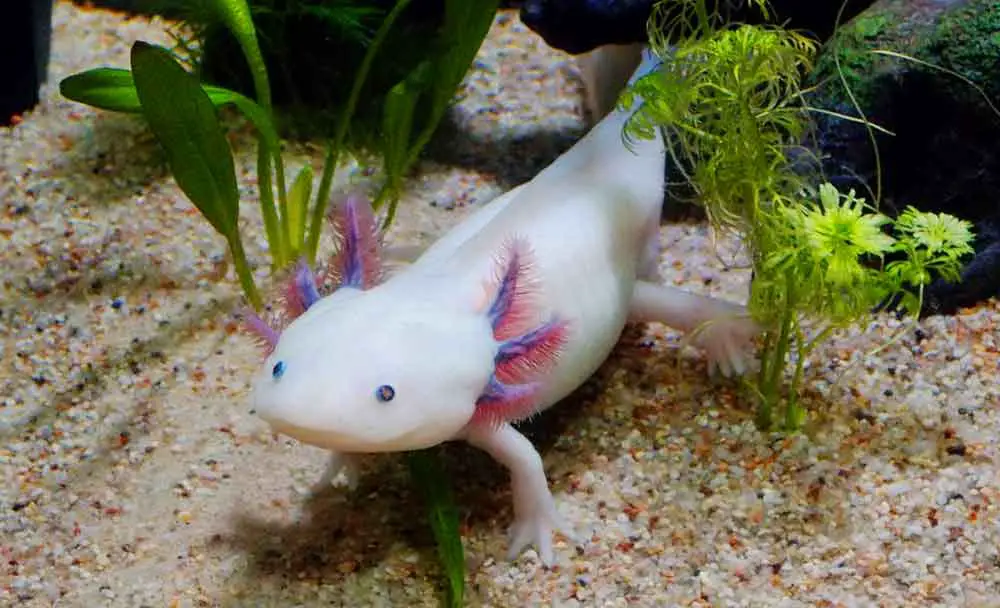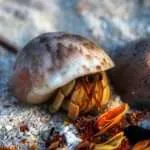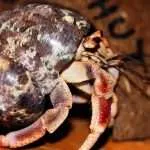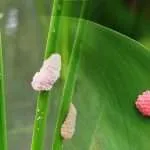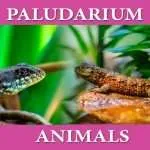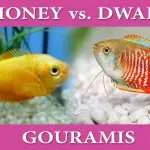So, you have a baby axolotl but don’t know how or what to feed them or if they eat Vinegar Eels.
This blog post will answer your question and inform you about everything you need to know about feeding your baby Axolotls and taking care of them.
Can Baby Axolotl Eat Vinegar Eels?
Let’s start with whether your baby Axolotl can eat Vinegar Eels
The answer is yes; baby Axolotl eats Vinegar Eels.
The Axolotls are carnivores who love meat-based diets.
They possess sharp teeth made for gripping moving preys.
Feed Baby Axolotls between 24-hours and 2-weeks old live food high in protein.
If you don’t know, a Vinegar Eel is not an eel, but a type of roundworm about 1/16 inch and 2 mm long, which makes them a good meal for the Axolotls, who can snap them with their sharp teeth and swallow them whole.
Also, note that a baby Axolotl grows very fast and needs to be fed 2 to 3 times daily.
Failure to feed them adequately can lead to cannibalism between them.
How to Feed Baby Axolotl with Vinegar Eels
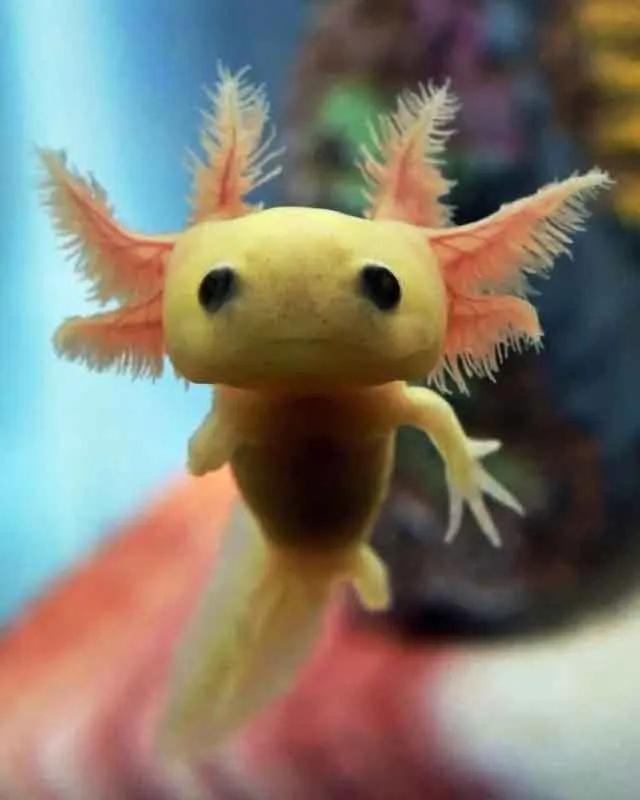
As I mentioned earlier, the Vinegar Eels must be alive when fed to the baby Axolotl because motion is the only stimulus that springs them into action.
The vinegar eel is preferable to other micro worms as food for the baby Axolotls for one main reason – they can live longer in fresh water and don’t sink to the bottom.
Other recommended foods for the baby Axolotl are baby Brine Shrimp, Micro worms, and white worms.
Don’t feed them for more than three minutes, and change the water after every feed to remove uneaten food that can later contaminate the water, causing health problems for the baby Axolotl.
Once a baby Axolotl is almost an inch, and their sense of smell improves, you can introduce other foods, including dead ones.
How to care for your baby Axolotls
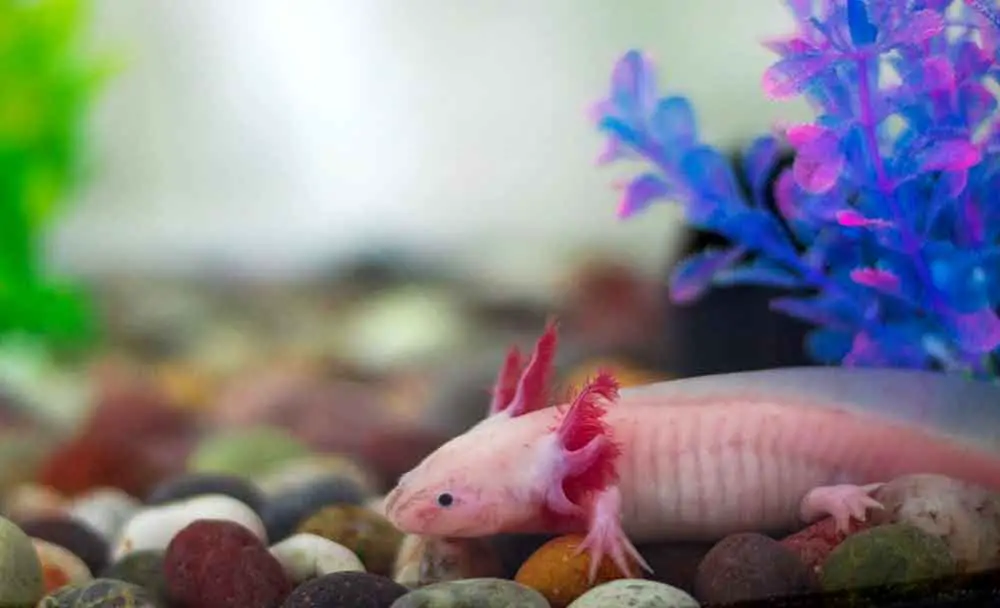
From when they are hatchlings to 2-weeks old, a baby Axolotl can be sensitive to conditions in the tank and prone to diseases.
So, it is good to pay attention to caring for them to avoid fatalities.
Baby Axolotls grow very fast. They grow from half an inch to one inch in just 2-weeks.
As hatchlings, you need to put them in a small jar or plastic container and change their water often.
Do not include a substrate yet, as ingesting sand can be dangerous for baby Axolotls.
Just make sure the water in the tank is at room temperature. At this hatchling stage, the Axolotls still rely on their gills for breathing (they only develop lungs later).
Water temperature for Axolotls
As I noted above, the baby Axolotl can be sensitive to conditions in their habitat, so maintaining the ideal water parameters is crucial for their growth and survival.
Sometimes, a minor temperature change is enough to cause fatalities.
The ideal temperature is between 20 and 22 C.
Also, test to ensure the water hardness and pH are between 7.4 and 7.6 mg/L.
Replace the water daily. I recommend changing the water after feeding to remove leftover food particles and other wastes.
Clean the tank regularly to get rid of parasites and bacteria. Also, resist the urge to overcrowd the tank with baby Axolotls.
Experts recommend you separate them into smaller containers.
What Do Adult Axolotls Eat?
Once Axolotl reaches adulthood and grows up to 9-inches, you can change their diet from only live foods to a combination of foods.
While baby Axolotls eat only live foods, adults can eat live food, frozen food, and pellets.
Conclusion
In summary, vinegar eel is good food for baby Axolotl.
They move around the aquarium and do not sink to the bottom.

